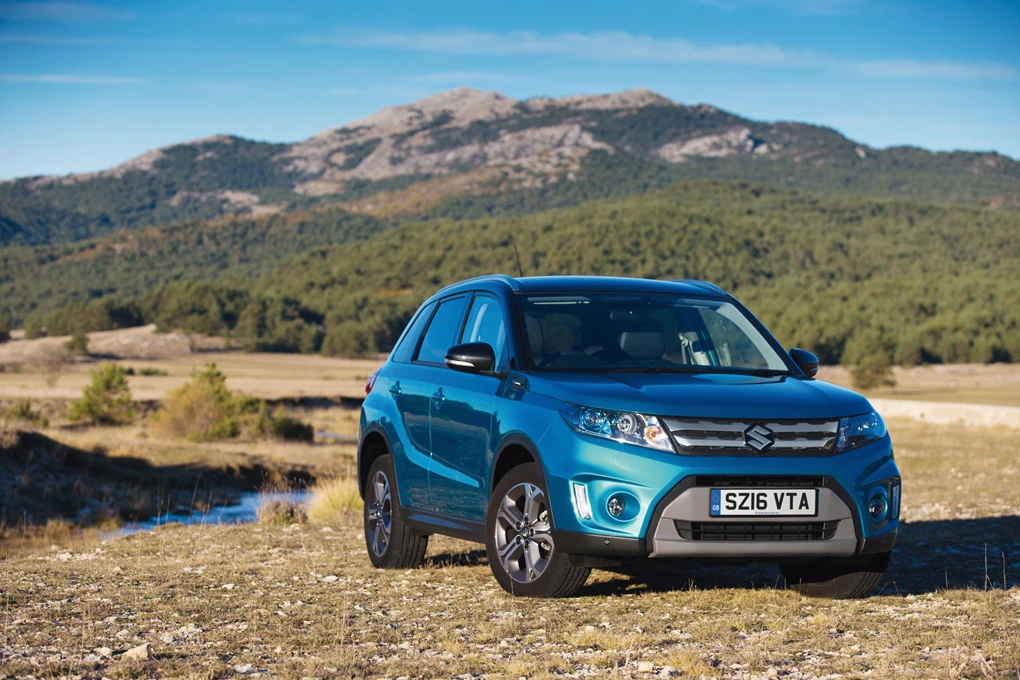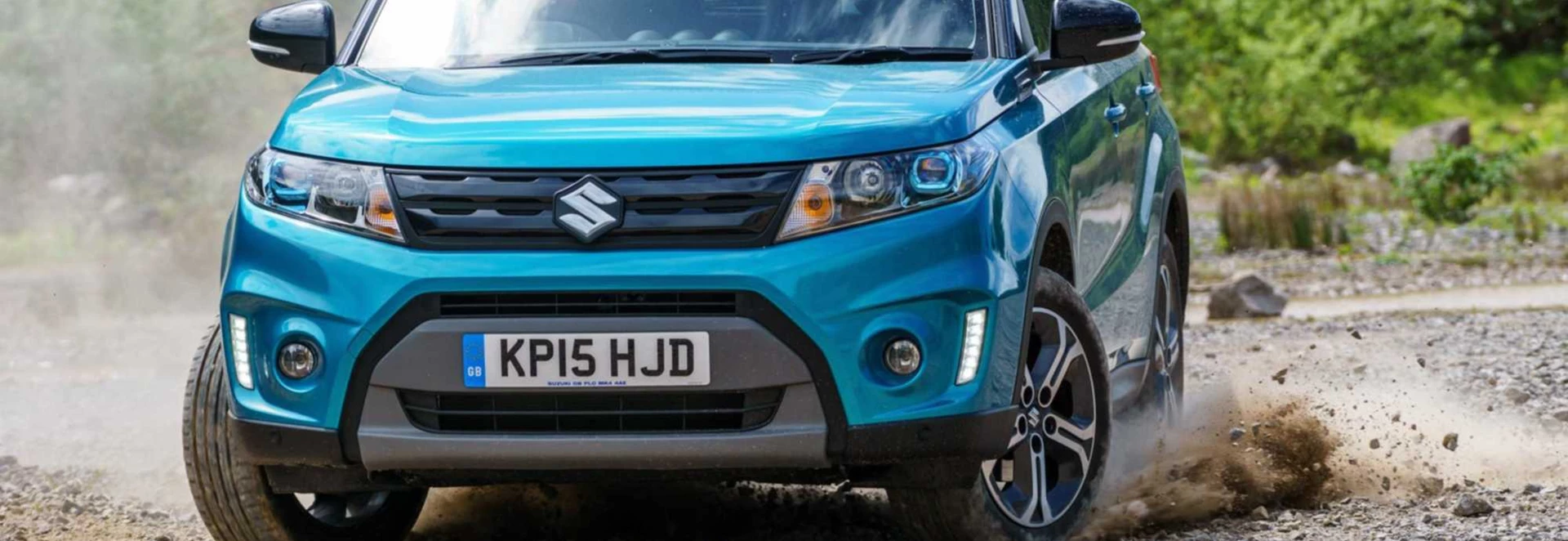Of the two crossover models Suzuki builds, the Vitara is the more SUV-like, being taller and wider than the SX4 S-Cross (which it shares a platform with), though not as long. The current version is the fourth to bear the Vitara name and was introduced in 2015 with a choice of one petrol and one diesel engine (both 1.6-litre and producing a maximum of 118bhp), while an all-new 128bhp 1.4-litre turbo petrol is reserved for the flagship Vitara S model.
Despite their rugged appearance, many Vitara specifications are front-wheel drive. However, those in the SZ5 and S trims have the option of the multi-mode ALLGRIP four-wheel drive system, which is worth considering if you plan to do any off-roading. From launch, the Vitara was offered only with manual transmission, though an automatic gearbox has since been become available for higher trim options.
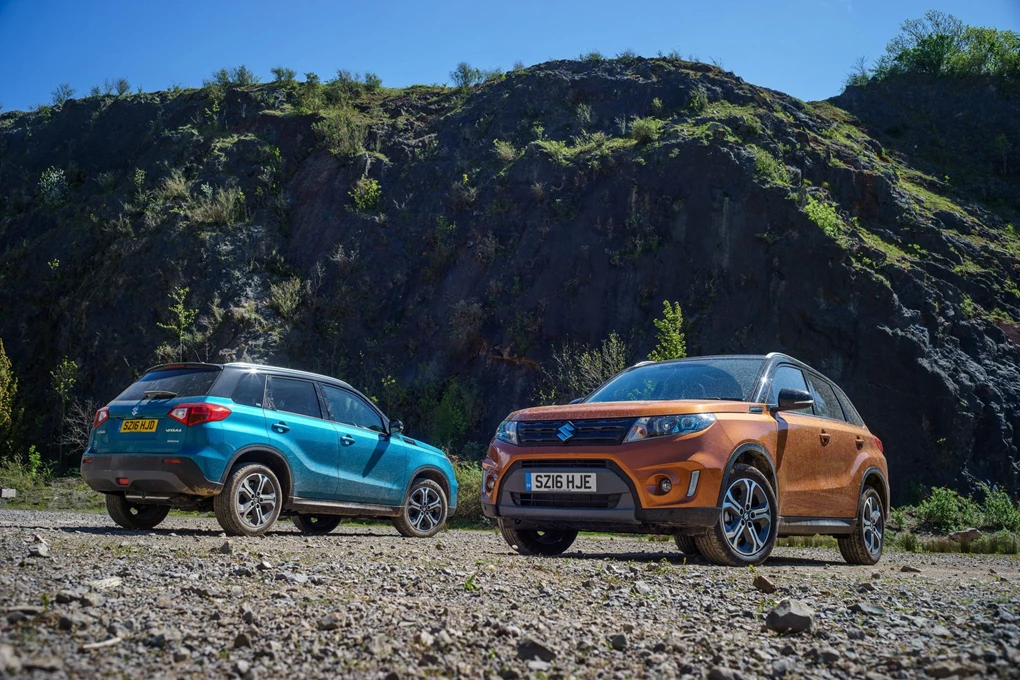
Performance
The majority of Vitaras have a top speed of 112mph, while the slightly racier 1.4-litre engine on the Vitara S has a top speed of 124mph. Their rates of acceleration are more variable: the front-wheel drive manual cars can do 0-62mph in 11.5 seconds - meanwhile, ALLGRIP has the unusual effect of adding half a second to this time for the petrol and taking a tenth off it if there's a diesel.
Of all the Vitara models, the S clocks the fastest time, with a 0-62mph sprint time of 10.2 seconds. The gear change in manual models is very precise, and smooth shifts are easy thanks to the excellent action of the clutch pedal. While it's not the fastest-shifting gearbox in the world, the six-speed automatic is still impressive, with seamlessly smooth shifts.
All engines are quiet when you're driving gently, but rev them beyond 4,000rpm (as you have to in the case of the entry-level petrol unit to get the best out of it) and they become quite noisy. The diesel pulls well from low revs, as you'd expect, but has to be kept above 1,500rpm. Drop below that and you'll need to change down a gear.
However, the real pick of the bunch is the 1.4-litre Boosterjet petrol. Impressively eager, it comes to life from 1,500rpm, hitting its stride at around 3,000rpm, and its 220Nm of torque on offer means it can scoot up the road at a genuine pace.
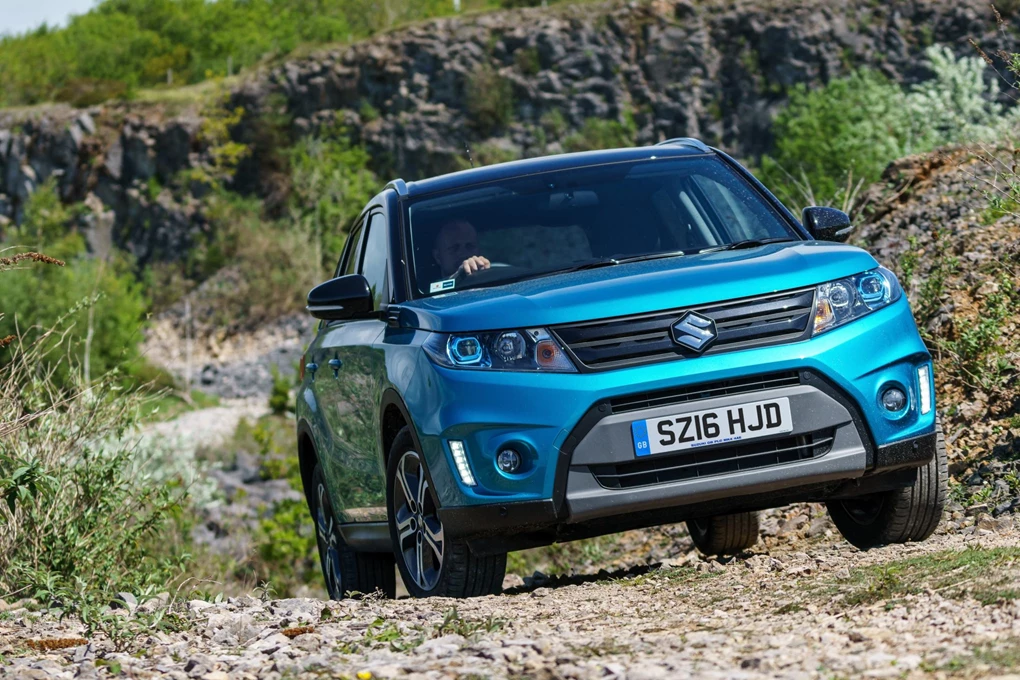
Ride and Handling
Petrol models are quite nimble through corners, while the diesels are more sluggish.
Previous Vitaras were not notable for being good to drive, but the current one is very pleasant. The steering is smooth and precise by SUV standards, the considerable body roll is well controlled and the ride quality is good on either 16 or 17-inch wheels. It's easily one of the best small SUV's out there when it comes to fun-factor. The car is, however, affected by the weight of its engine. Petrol models are quite nimble through corners, while the diesels are more sluggish. The ALLGRIP 4x4 system does not include a low-ratio mode for the gearbox, which limits the Vitara's off-road potential to some extent. But as long as you're not feeling too ambitious there is no problem about driving along rough ground or tackling fairly steep unsurfaced slopes.
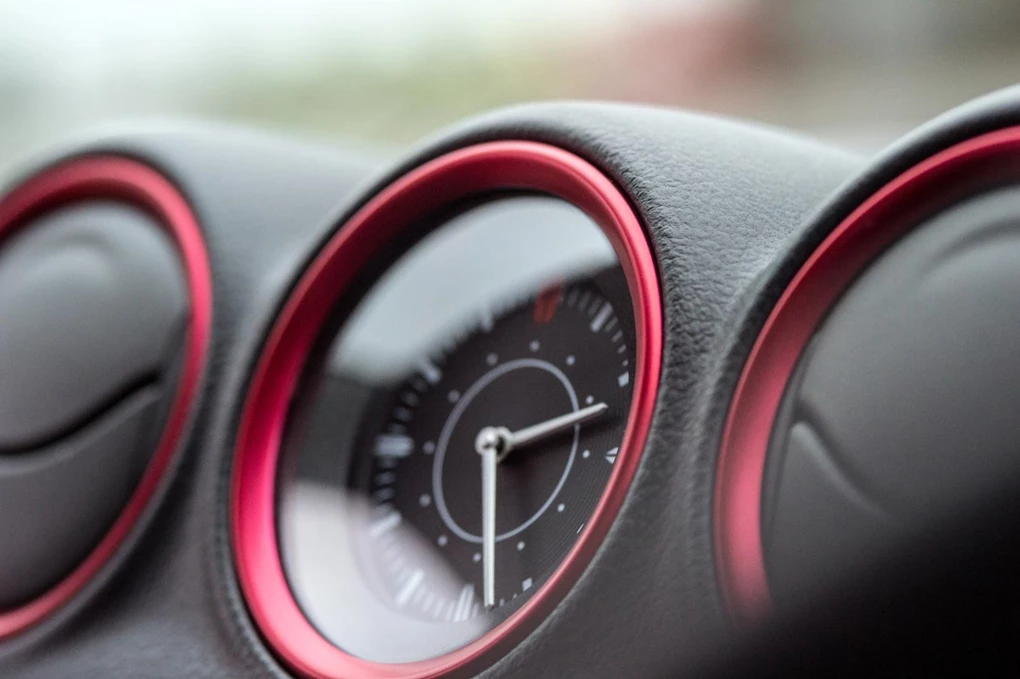
Interior and Equipment
Suzuki may be a Japanese company, but the Vitara is built in Hungary, at a factory which has been producing Suzukis since the early 1990s.
Unlike other Suzuki cars, there is no SZ3 trim level for the Vitara. The available specifications are SZ4, SZ-T and SZ5. They all include automatic air-conditioning, DAB digital radio, Bluetooth connectivity and cruise control with a speed limiter. Satellite navigation comes in at the SZ-T level, while the SZ5 gets LED headlights, adaptive cruise control and a two-piece panoramic sunroof. The Vitara S model gets some bespoke red stitching on its seats and red air-vent surrounds. Although kit is on the money, it still has that 'very Suzuki' feel to its interior, with plenty of hard-wearing plastics. With the rear seats in place, the luggage capacity is 375 litres, or about what you'd expect from a 'not unusually roomy' family hatchback. The Vitara is therefore a lot less practical in this respect than the SX4 S-Cross, whose load volume is a more impressive 430 litres. Space for rear passengers is limited somewhat too. As long as you are a child or a relatively small adult then you won’t have a problem. However, headroom in particular can be difficult for tall occupants, especially if you go for the optional panoramic sunroof.
Cost
SZ-Ts cost from about £16,000, and the top model is the SZ5 diesel ALLGRIP at just under £22,000 (not including the Rugged or Urban option packs).
Prices start very competitively at about £14,000 for the SZ4, which is available only with front-wheel drive, the petrol engine and the manual gearbox. SZ-Ts cost from about £16,000, and the top model is the SZ5 diesel ALLGRIP at just under £22,000 (not including the Rugged or Urban option packs). The Vitara S is priced around the same as the top diesel. Diesel models cost £1,500 more than petrol ones, but they are likely to retain that premium at resale time, and they are much cheaper to run. The official combined fuel economy is 70.6mpg for front-wheel drive cars and 67.2mpg for ALLGRIP ones, and CO2 emissions are 106g/km and 111g/km respectively. This leads to annual Vehicle Excise Duty payments of £20 and £30 if you buy your car before 1 April 2017. Petrol-engined Vitaras inevitably lag some way behind, with combined economy ranging from 49.5mpg (ALLGRIP automatic) to 53.3mpg (front-wheel drive manual). If you do go for the sportier Vitara S model then fuel economy is actually around the same as the front-wheel drive 1.6-litre. CO2 emissions are between 123g/km and 131g/km, so you'll pay either £110 or £130 in VED. The 2017 reform means that all Vitaras bought from then on will cost £140 per year to tax.
Our Verdict
The latest Vitara has more to recommend it than any previous model ever did. Possibly the best-looking one yet, it's also by far the nicest to drive, and the running costs of the diesel models in particular should be impressively low. It’s certainly worth considering as an alternative to similar-sized crossovers like the Renault Captur and the Peugeot 2008. Its biggest challenger may be another Suzuki - the SX4 S-Cross. Suzuki is confident that the lifestyle SUV market is large enough for it to be able to field two contenders, but the S-Cross is more practical and can do as much off-roading as most Vitara owners will require. The Vitara, on the other hand, has the longer history, and loyal fans of its predecessors will no doubt be more than satisfied with it.
